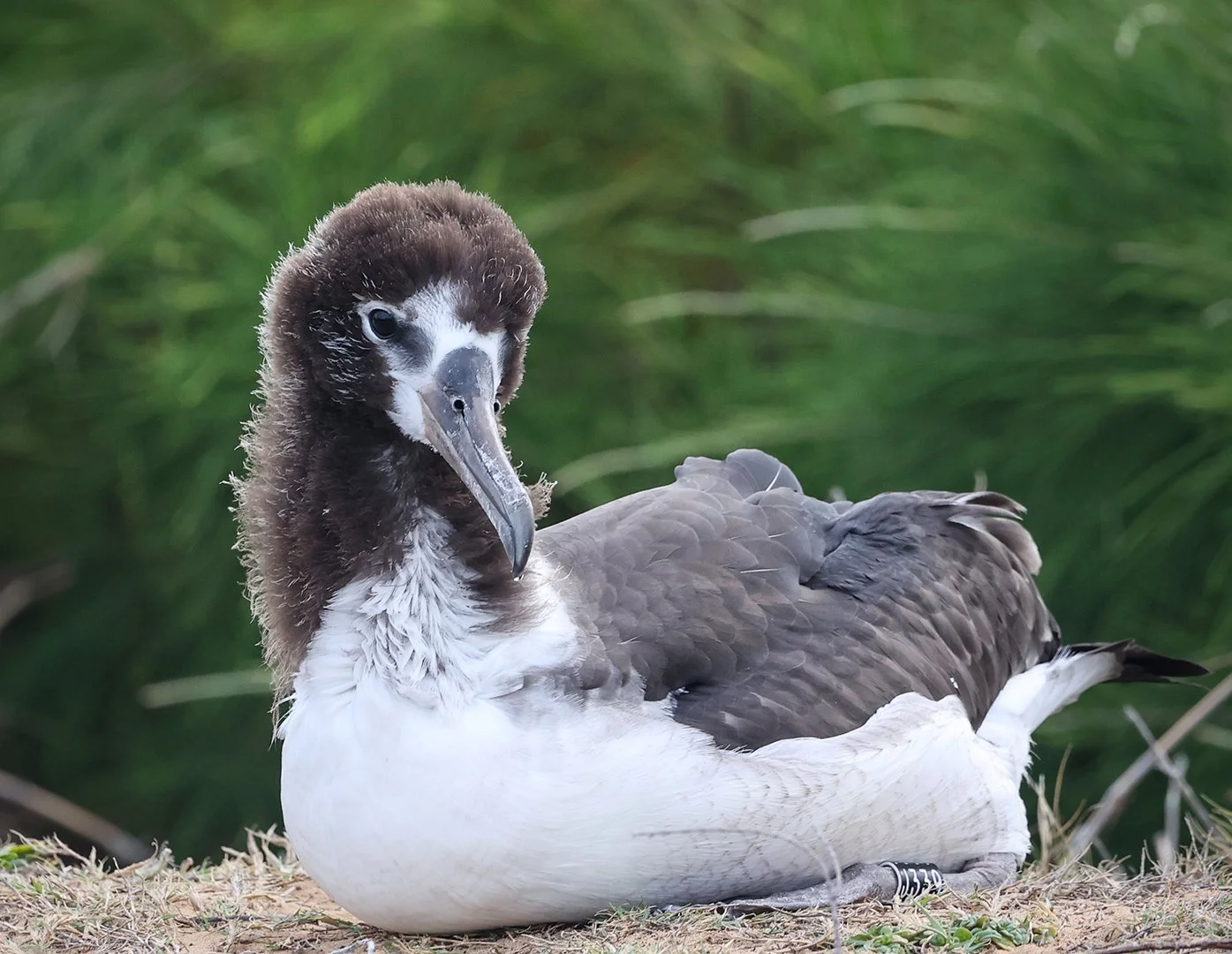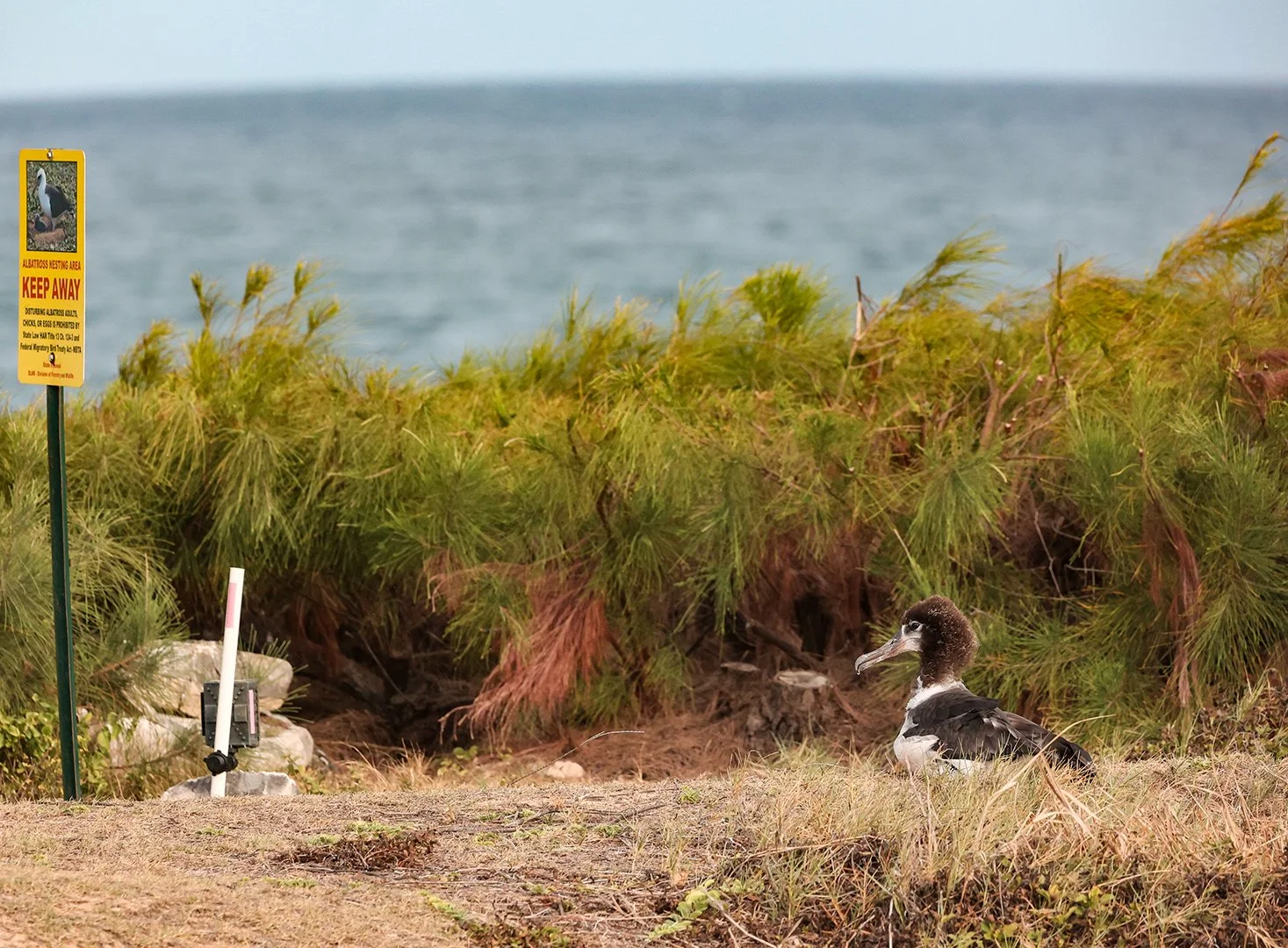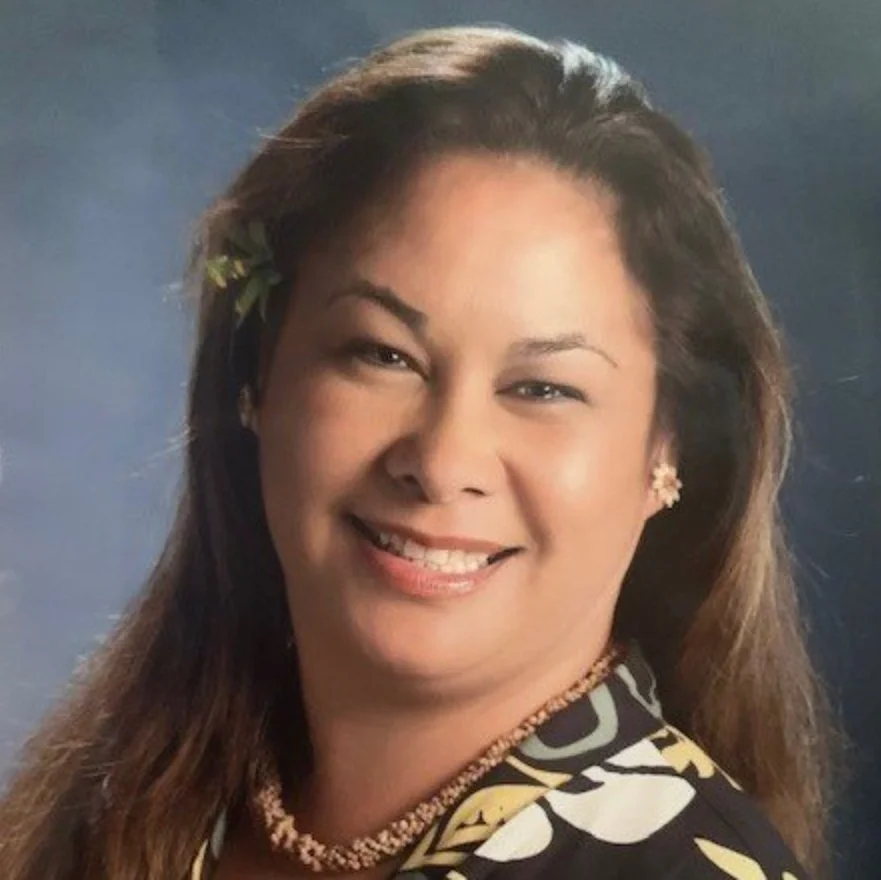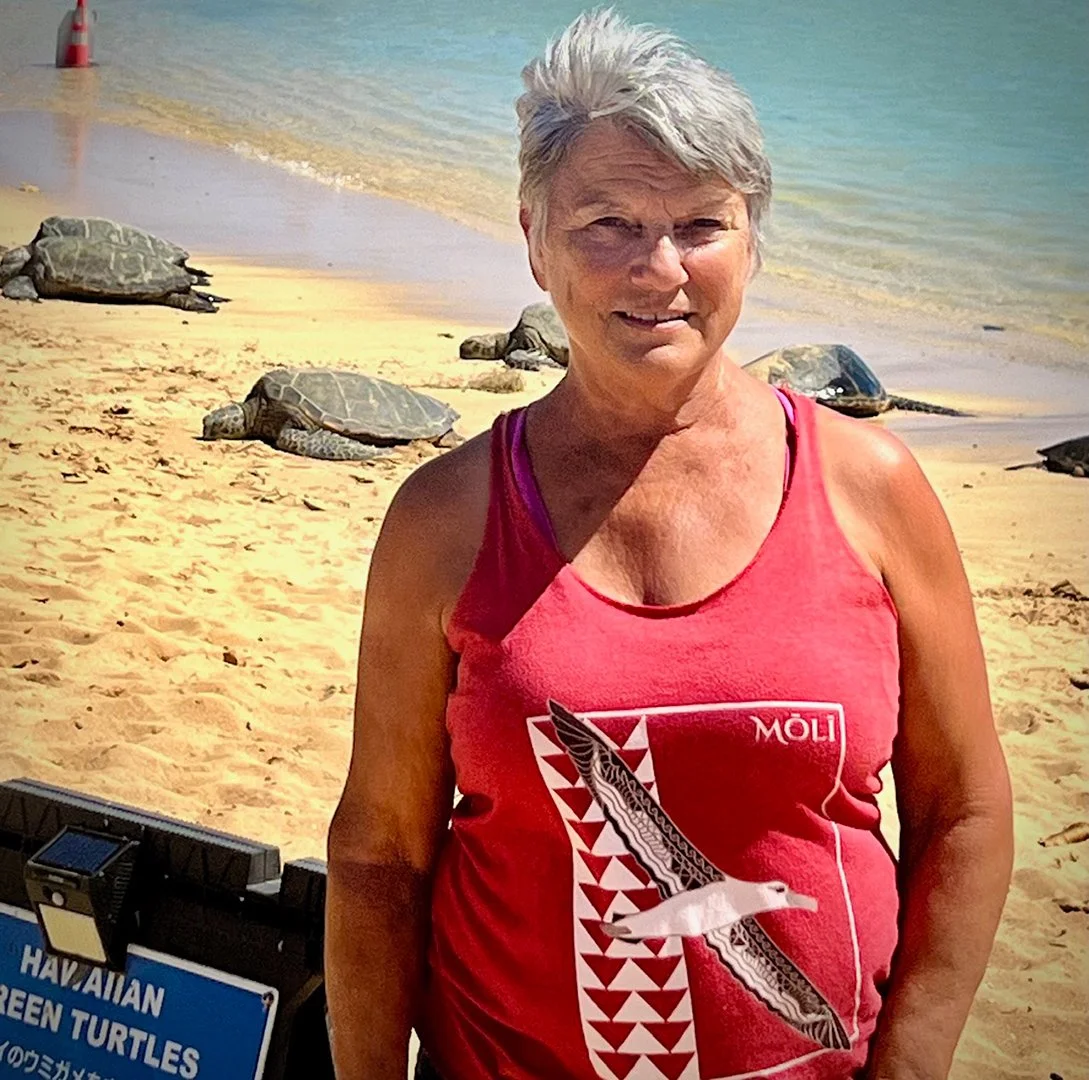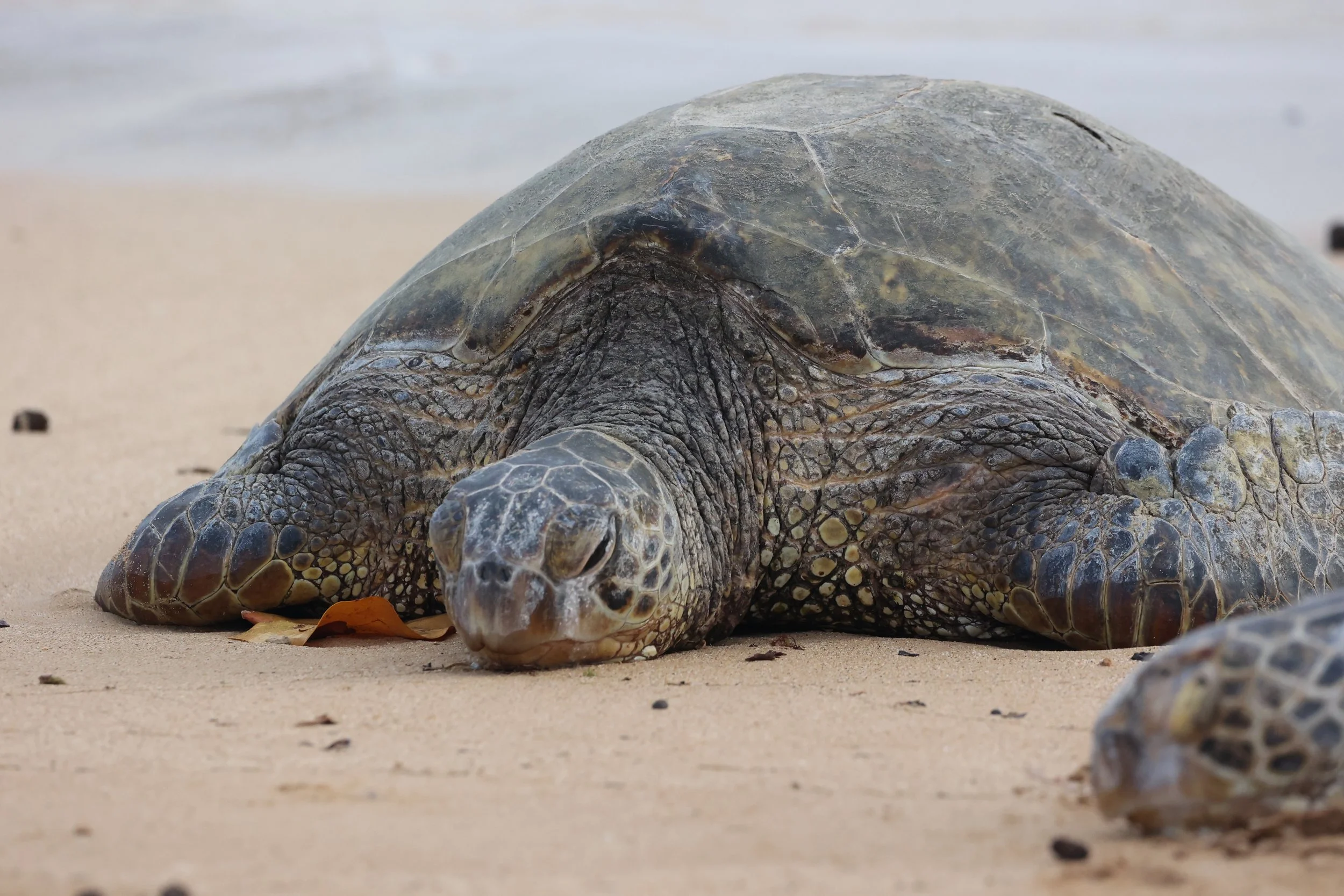North Star on the South Shore – First Poʻipū Mōlī Chick in Recorded History
By Safina Center Conservationist-in-Residence Hob Osterlund
Hōkūpaʻa five days before fledging. ©Hob Osterlund
On July 9, 2025, a mōlī (Laysan albatross) chick fledged (flew for the first time) from the hotel grounds of the Point at Poʻipu on Kauaʻi. She was just over five months old. True to form, others of the roughly 250 chicks on the island had also started fledging.
But something set this particular chick apart.
Never in recorded history has there been a successful mōlī nest in Poʻipū, or anywhere on the south shore. Locals report having seen albatross in flight and in courtship on the ground. But no one (so far) could remember a chick growing up there.
Hōkūpaʻa near her nest site. ©Hob Osterlund
What about ancient history?
Mōlī likely nested on many islands of the Hawaiian Archipelgo for thousands—if not millions—of years. But on the islands where humans arrived with predators such as cats, dogs, rats and pigs, mōlī nesting would have disappeared. Kuaihelani (Midway) Atoll remains the mōlī mother ship—more than one thousand miles northwest of Kauaʻi—where this year there were 620,000 mōlī nests. Itʻs the largest colony of any albatross species in the world.
In modern history, a few intrepid mōlī attempted nesting at Barking Sands and Kīlauea Point. A 1980 article in the ʻElepaio Journal of the Hawaiʻi Audubon Society described a total of thirty albatross eggs between 1974-1980. Almost all were predated, abandoned or vandalized. Three chicks did fledge in 1979, but only because of a temporary fence at Kīlauea Point. Zero chicks fledged from Barking Sands.
Since those days, predator protection on Kauaʻi has unevenly improved and the mōlī population has gradually grown. This nesting season Kauaʻi started out with three hundred and ninety-four known nests, not including ninety-three on Lehua Islet. As of late June, those nearly four hundred nests had produced two hundred and fifty chicks.
Kainani Kahaunaele, a Hawaiian language teacher at the University of Hawaiʻi-Hilo—and a revered musician from Kauaʻi—named the mōlī chick Hōkūpaʻa, Hawaiian for north star, or Polaris. Hōkūpaʻa was vital to traditional navigators for wayfinding.
Hōkūpaʻa practicing for her first flight. ©Hob Osterlund
So what happened that made it possible this year for Hōkūpaʻa to successfully fledge from the south shore?
Jamie Shigeta, the General Manager at the Point at Poʻipū, is a primary key to that success. “From the moment we were notified by the Department of Land and Natural Resources (DLNR) that an albatross had laid an egg, our team went into action,” she said. “We worked very closely with DLNR to make sure the area was secured and monitored often. We have a deep sense of kuleana (responsibility/accountability) when it comes to the land/property as we also have several iwi kupuna (ancestral remains) residing here. We practice mālama (stewardship/care) by nurturing and protecting the land,” Jamie said. The team also focused on visitors. “We posted literature in our public areas with high visibility to inform our guests,” Jamie said.
Jamie Shigeta, General Manager, Point at Poʻipū, Kauaʻi. ©Pacific Business News
Ms. Shigeta is very aware of the history of seabird predation along the coastline. “We found that most cats in the area were domestic as we have successfully trapped them. We educated about fines for violations. Fliers on property have created additional eyes for the area,” Jamie said. She and her team emphasized the cultural importance of their actions. “When you express the importance of practicing Hawaiian values and showing respect for the culture and traditions, people are eager to participate and show their support as nature continues to thrive in unexpected ways,” Jamie said.
Another crucial person was Kauaʻi Albatross Network (KAN) volunteer Lynn Bowen. Lynn regularly visited, took photos, interacted with the public and kept key people informed. How did she get so passionate about Hōkūpaʻa?
Lynn Bowen at green sea turtle haul out, Po’pu. ©Dan Bowen
“Back in November I noticed an albatross on the bluff,” Lynn said. “I contacted Hob Osterlund (founder of KAN) and she told me about the unhatched egg last season,” Lynn said, “and said they hoped the pair would have a fertile egg this year. I was already a volunteer with Mālama i Na Honū for the turtles so watching this nest was right up my alley. When I found an active nest on November 30, I was hooked,” Lynn said. “I followed Hōkūpa’a from hatch to fledge.” Since the nest was close to a popular walking path, it was not always easy to keep the nest site confidential. Because of her work with the honu, however, Lynn knew what and what not to share with passers-by. “I was always cautious near the nest site to not look too obvious why I was there. When a dog person came along, I would gently remind them about the wildlife in the area. I was very cautious with what I posted on social media so I never gave away the exact location. When I met people who already knew about Hōkūpaʻa, I would explain how extra special this one was, hoping they’d be supportive.”
Poʻipū is known for daily honu (green sea turtle) haul out. ©Hob Osterlund
Poʻipū is a popular visitor destination. ©Hob Osterlund
Lynn knew that education and storytelling were huge. “People will often get excited by wildlife if we talk with them in a kind way. Most visitors end up respecting the wildlife and taking that respect home with them,” said Lynn.
Hōkūpaʻa fledges. ©Lynn Bowen

